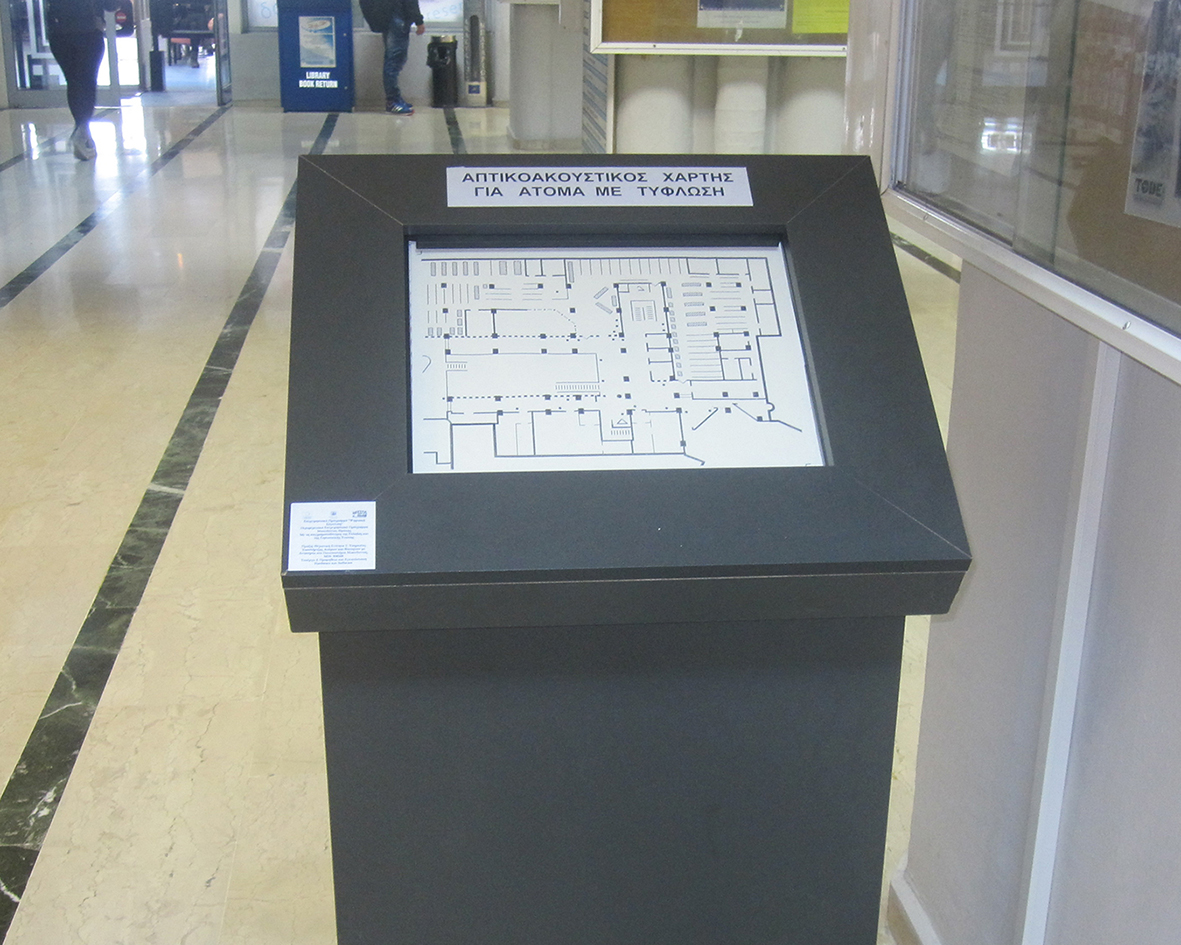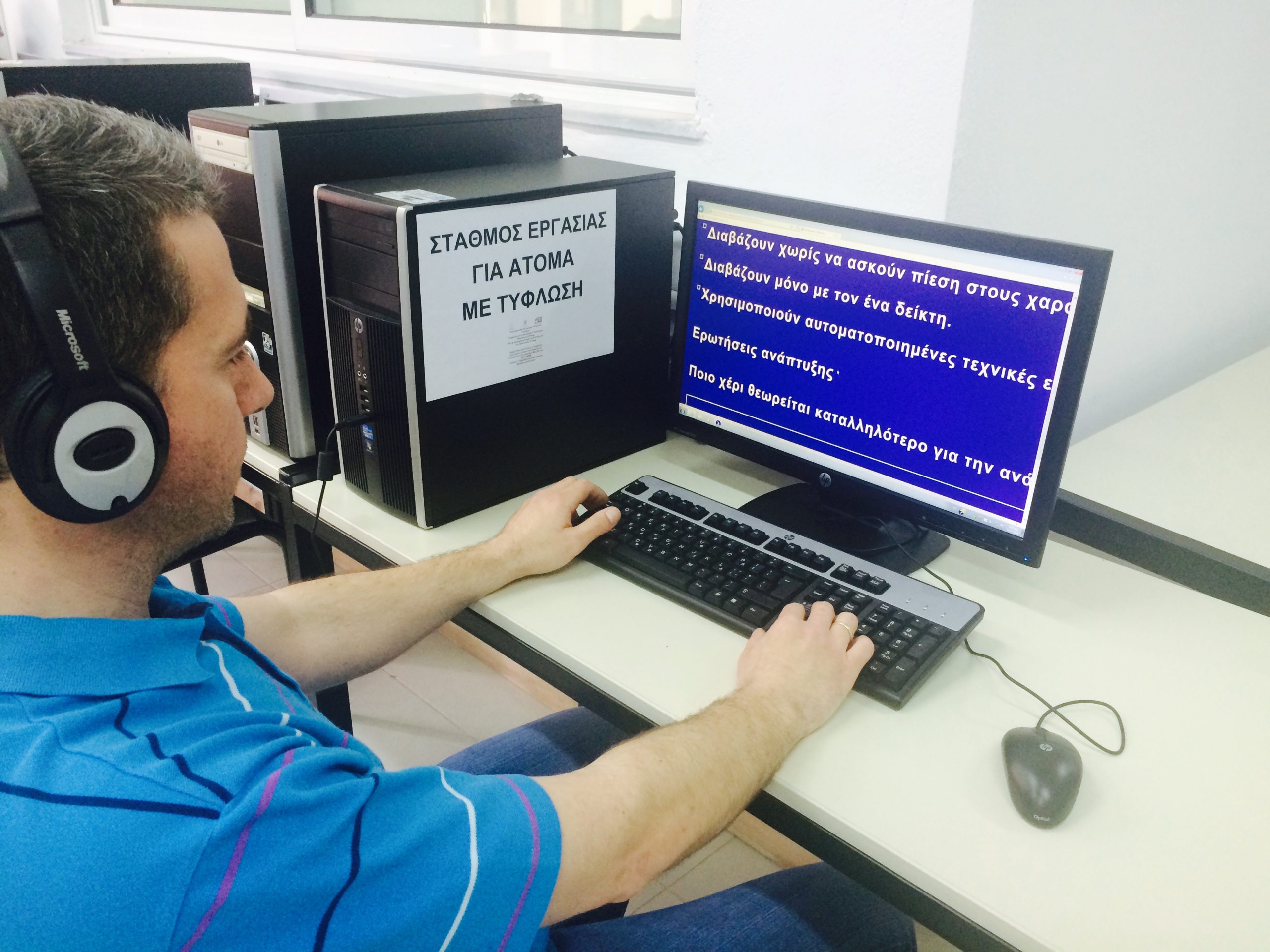Leader: University of Macedonia
Project Coordinator: Prof. Konstantinos Papadopoulos
Partners: No partners involved
The project “Support Services for Individuals and Students with Disabilities at the University of Macedonia" concerned among others the design and implementation of two particularly innovative and pioneering applications at international level:
- An audio-tactile guidance system for indoors for blind individuals
- An information system for conducting written examinations of students with visual impairments
Audio-tactile guidance system for indoors for blind individuals
10 touchpads were installed at key points of the University building, on which audio-tactile maps are placed. The maps are read by touch and show in detail all the areas of the University, but also special information, such as stairs, ramps, elevators, entrances, emergency exits, as well as the location of obstacles in the movement of people with blindness. A blind user reads the information by touch and simultaneously he listens to audio messages and descriptions that help him significantly in understanding the structure of the space and in planning the course he wishes to follow. For example, he can hear descriptions of possible routes, with turning points, reference points, obstacles, as well as detailed descriptions of amphitheaters and halls, indicating the rows and position of the seats, the steps, the position of the blackboard and of the entrance/exit. He also listens to the use/service of each office (e.g. the service or the name of the teacher housed in it), descriptions of obstacles, but also detailed information, such as the number of stairs on each staircase.

Information system for conducting written examinations of students with visual impairments
The application developed in practice removes the restriction/ exclusion of students with visual impairments, due to their inability to participate in written exams. Therefore it enables them, if they wish, to take written examinations in the halls and amphitheaters of the university, together with the rest of their fellow students. The use of this system, in addition to eliminating the known disadvantages of an oral examination, is a powerful antidote to diversity. Creating the exam form by teachers requires a very simple and automated process that does not require special knowledge. Exam topics can contain both developmental questions and multiple choice questions. Students with blindness read (listen to be precise) the exam questions and the answers they give, through synthetic speech, as the system works with screen reading software and Greek voice composers. Students with visual impairment gain access, both through their hearing and through their residual vision, by selecting themselves, very easily, the parameter values that are directly related to their ability to read texts, such as font size, text contrast and background, font, and spacing of lines and characters in text.
